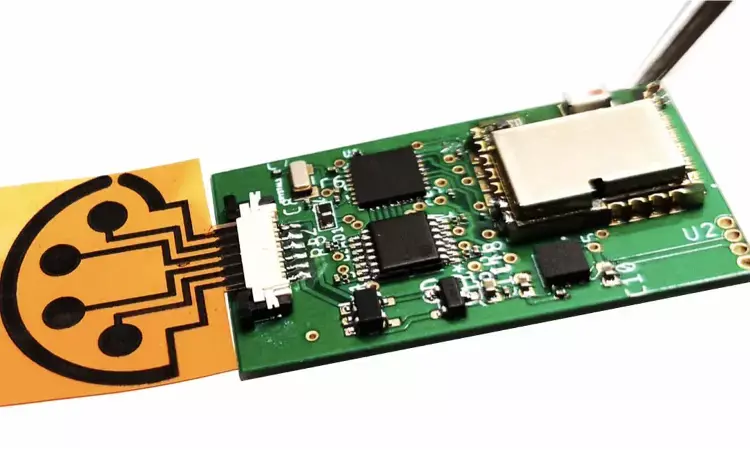- Home
- Medical news & Guidelines
- Anesthesiology
- Cardiology and CTVS
- Critical Care
- Dentistry
- Dermatology
- Diabetes and Endocrinology
- ENT
- Gastroenterology
- Medicine
- Nephrology
- Neurology
- Obstretics-Gynaecology
- Oncology
- Ophthalmology
- Orthopaedics
- Pediatrics-Neonatology
- Psychiatry
- Pulmonology
- Radiology
- Surgery
- Urology
- Laboratory Medicine
- Diet
- Nursing
- Paramedical
- Physiotherapy
- Health news
- Fact Check
- Bone Health Fact Check
- Brain Health Fact Check
- Cancer Related Fact Check
- Child Care Fact Check
- Dental and oral health fact check
- Diabetes and metabolic health fact check
- Diet and Nutrition Fact Check
- Eye and ENT Care Fact Check
- Fitness fact check
- Gut health fact check
- Heart health fact check
- Kidney health fact check
- Medical education fact check
- Men's health fact check
- Respiratory fact check
- Skin and hair care fact check
- Vaccine and Immunization fact check
- Women's health fact check
- AYUSH
- State News
- Andaman and Nicobar Islands
- Andhra Pradesh
- Arunachal Pradesh
- Assam
- Bihar
- Chandigarh
- Chattisgarh
- Dadra and Nagar Haveli
- Daman and Diu
- Delhi
- Goa
- Gujarat
- Haryana
- Himachal Pradesh
- Jammu & Kashmir
- Jharkhand
- Karnataka
- Kerala
- Ladakh
- Lakshadweep
- Madhya Pradesh
- Maharashtra
- Manipur
- Meghalaya
- Mizoram
- Nagaland
- Odisha
- Puducherry
- Punjab
- Rajasthan
- Sikkim
- Tamil Nadu
- Telangana
- Tripura
- Uttar Pradesh
- Uttrakhand
- West Bengal
- Medical Education
- Industry
A 10 mins at home test of COVID-19 may help detect asymptomatic carriers

When attached to supporting electronics, the sensor can wirelessly transmit data to the user's cell phone through Bluetooth.
CREDIT
Caltech
Caltech researchers have developed a new type of multiplexed test with a low-cost sensor that may enable the at-home diagnosis of a COVID infection in less than 10 minutes.
The test may be carried out on small volumes of saliva or blood. The test doesn't require the involvement of a medical professional.
The research has been published online and will appear in the December issue of the journal Matter.
The research was conducted in the lab of Wei Gao, assistant professor in the Andrew and Peggy Cherng department of medical engineering.. Previously, Gao and his team have developed wireless sensors that can monitor conditions such as gout, as well as stress levels, through the detection of extremely low levels of specific compounds in blood, saliva, or sweat.
Gao's sensors are made of graphene, a sheet-like form of carbon. A plastic sheet etched with a laser generates a 3D graphene structure with tiny pores. Those pores create a large amount of surface area on the sensor, which makes it sensitive enough to detect, with high accuracy, compounds that are only present in very small amounts. In this sensor, the graphene structures are coupled with antibodies, immune system molecules that are sensitive to specific proteins, like those on the surface of a COVID virus, for example.
Previous versions of the sensor were impregnated with antibodies for the hormone cortisol, which is associated with stress, and uric acid, which at high concentrations causes gout. The new version of the sensor, which Gao has named SARS-CoV-2 RapidPlex, contains antibodies and proteins that allow it to detect the presence of the virus itself; antibodies created by the body to fight the virus; and chemical markers of inflammation, which indicate the severity of the COVID-19 infection.
"This is the only telemedicine platform I've seen that can give information about the infection in three types of data with a single sensor," Gao says. "In as little as a few minutes, we can simultaneously check these levels, so we get a full picture about the infection, including early infection, immunity, and severity."
Established COVID-testing technologies usually take hours or even days to produce results. Those technologies also require expensive, complicated equipment, whereas Gao's system is simple and compact.
So far, the device has been tested only in the lab with a small number of blood and saliva samples obtained for medical research purposes from individuals who have tested positive or negative for COVID-19. Though preliminary results indicate that the sensor is highly accurate, a larger-scale test with real-world patients rather than laboratory samples must be performed, Gao cautions, to definitively determine its accuracy.
With the pilot study now completed, Gao next plans to test how long the sensors last with regular use, and to begin testing them with hospitalized COVID-19 patients. Following in-hospital testing, he would like to study the suitability of the tests for in-home use. Following testing, the device will need to receive regulatory approval before it is available for widespread use at home.
"Our ultimate aim really is home use," he says. "In the following year, we plan to mail them to high-risk individuals for at-home testing. And in the future, this platform could be modified for other types of infectious disease testing at home."
Dr Kamal Kant Kohli-MBBS, DTCD- a chest specialist with more than 30 years of practice and a flair for writing clinical articles, Dr Kamal Kant Kohli joined Medical Dialogues as a Chief Editor of Medical News. Besides writing articles, as an editor, he proofreads and verifies all the medical content published on Medical Dialogues including those coming from journals, studies,medical conferences,guidelines etc. Email: drkohli@medicaldialogues.in. Contact no. 011-43720751


